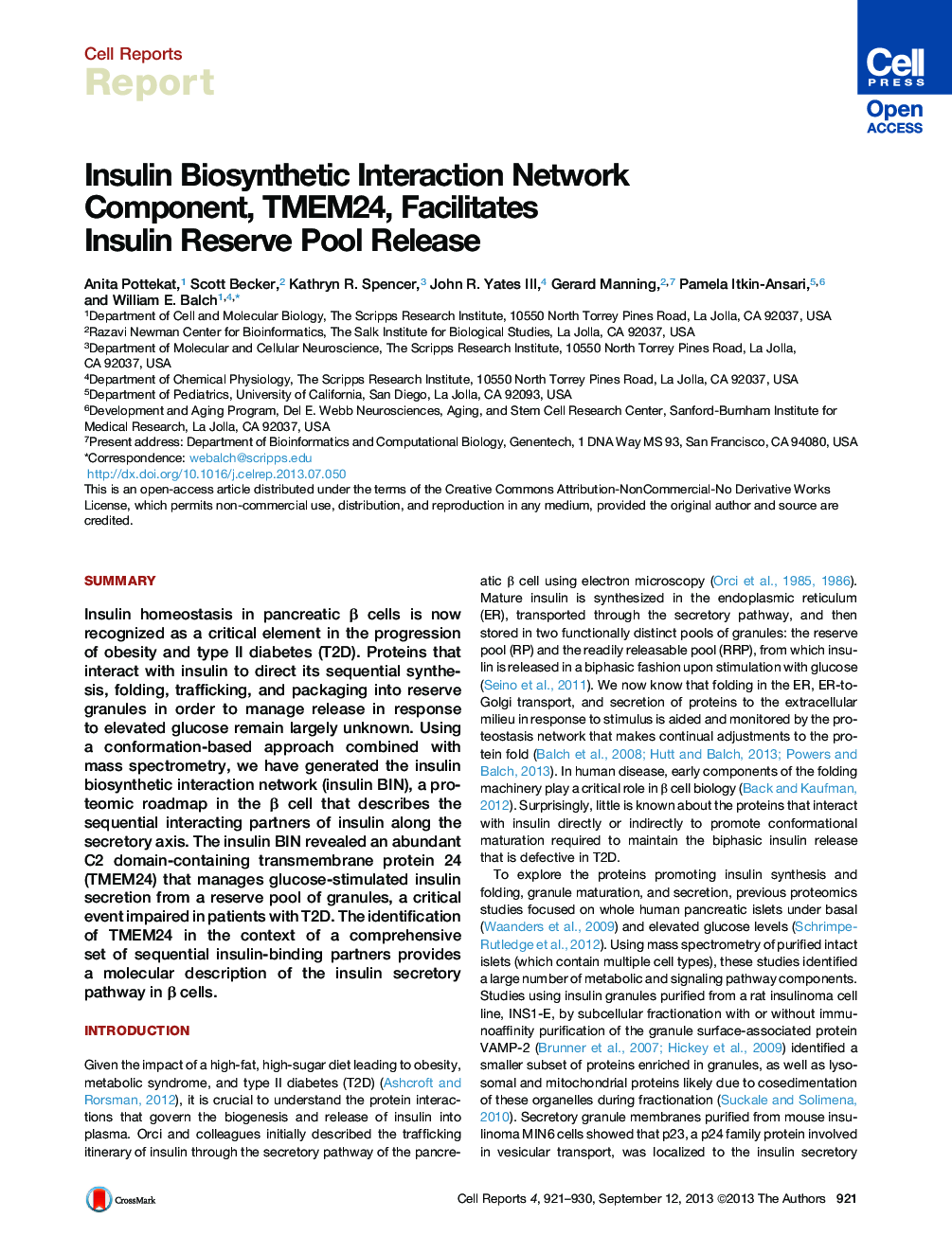| Article ID | Journal | Published Year | Pages | File Type |
|---|---|---|---|---|
| 2040806 | Cell Reports | 2013 | 10 Pages |
•We present a defined insulin biosynthetic interaction network (insulin BIN)•Insulin BIN describes the molecular components involved in insulin secretory pathway•Insulin BIN identified C2 domain-containing transmembrane protein TMEM24•TMEM24 manages glucose-stimulated insulin secretion from the reserve pool of granules
SummaryInsulin homeostasis in pancreatic β cells is now recognized as a critical element in the progression of obesity and type II diabetes (T2D). Proteins that interact with insulin to direct its sequential synthesis, folding, trafficking, and packaging into reserve granules in order to manage release in response to elevated glucose remain largely unknown. Using a conformation-based approach combined with mass spectrometry, we have generated the insulin biosynthetic interaction network (insulin BIN), a proteomic roadmap in the β cell that describes the sequential interacting partners of insulin along the secretory axis. The insulin BIN revealed an abundant C2 domain-containing transmembrane protein 24 (TMEM24) that manages glucose-stimulated insulin secretion from a reserve pool of granules, a critical event impaired in patients with T2D. The identification of TMEM24 in the context of a comprehensive set of sequential insulin-binding partners provides a molecular description of the insulin secretory pathway in β cells.
Graphical AbstractFigure optionsDownload full-size imageDownload as PowerPoint slide
